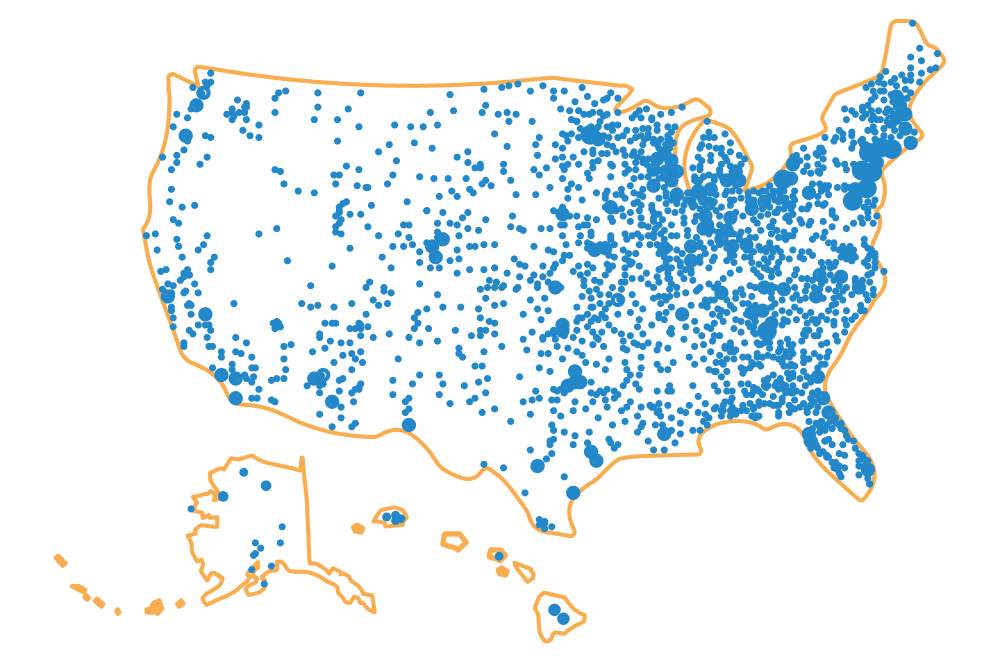Is green your favorite color? Would you like to hold onto more of it? Ohio’s 529 Plan, CollegeAdvantage, wants to help you save more green this St. Patrick’s Day 2023 to build your child’s savings for a higher education.
529 plan tax advantages
A huge benefit of saving in Ohio’s 529 Plan for education after high school is the tax advantages. These benefits include tax-free earnings, tax-free withdrawals, and a state tax deduction for Ohio residents. These tax advantages can help you save even more of your green.
While saving in Ohio 529, all earnings grow tax-free, meaning that all the investment growth is yours to use for your children’s future educational expenses. Compound interest — the interest earned on contributions, earnings, and interest already accumulated in the 529 account — is included in the tax-free earnings. To see just how tax-free growth adds up with a 529 savings plan, use the tax benefit tool to see the difference between a 529 plan account and a taxable savings account.
Withdrawals from a 529 plan used for qualified higher education expenses are also tax-free for federally accredited programs. These costs include tuition; room and board when your beneficiary is enrolled at least half-time; mandatory fees; computer equipment and related technology as well as internet services; books, supplies and equipment needed for enrollment and classes; and certain expenses for a special-needs student. Room and board costs also include rent for off-campus residency and groceries (non-taxable items only), provided these costs are equal or less than the same room and board allowances from the accredited school. Certain costs for U.S. Labor Department-approved apprenticeships are also included as qualified higher education expenses. For tax purposes, the burden of proof for qualified expenses and withdrawals is placed on you as the account owner. Make sure to retain all documentation of your beneficiary's room and board costs and other 529-qualifed expenses.
A 529 withdrawal can also be used to pay for K-12 tuition at a private, public, or religious elementary or secondary school. There is a limit of $10,000 per year that can be withdrawn from a 529 account to pay for the K-12 tuition. If your child has more than one 529 plan, then the combined qualified distributions from all the 529 accounts for K-12 tuition is limited to $10,000 a year. Consult your qualified tax advisor for specific information.
Any Ohio resident — whether the account owner or a gift giver — who contributes to Ohio’s 529 Plan can deduct their contributions from their taxable state income. The deduction is $4,000 per year, per beneficiary, with unlimited carry forward, which means that the $4,000 is not a contribution cap. If an Ohio taxpayer contributes more than $4,000 in one year, they can continue to subtract $4,000 per year, per beneficiary, from their State of Ohio taxable income until all Ohio 529 Plan contributions have been deducted.
Others can add some green, too
Loved ones, family, and friends can all contribute their green to your Ohio 529 higher education savings. Ask for gifts of higher education for your children’s birthdays, holiday celebrations, graduations, and other celebrations. Loved ones want to give presents that have significance and what gift can last longer than a college education or technical training? A 529 gift contribution lasts a lifetime.
Ugift is an easy-button gift-giving feature with Ohio’s 529 Plan. Ugift is an innovative way to invite family and friends to save your children’s’ future college costs when celebrating holidays, birthdays, and special achievements with gift contributions to your Ohio Direct 529 Plan account. After logging in to your Ohio Direct 529 Plan, you can set up an Ugift code to send to our loved ones who would like to give the gift of a higher education. This code permits others to make online gift contributions directly to your CollegeAdvantage Direct 529 Plan without your account number. Once you provide the Ugift code, friends and family can visit Ugift529.com to make their electronic contribution securely from their bank account.
Ready-made investment options
To save your green, you can tailor a 529 college savings account to your family’s needs. Ohio’s 529 Plan offers a wealth of 529 investment options, from leading investment managers Vanguard, Dimensional Fund Advisors, and Fifth Third Bank. The investments include ready-made target enrollment portfolios and ready-made risk-based portfolios. The ready-made target enrollment investment options are simple to use as each portfolio’s asset mix and allocations are pre-determined. When your child is younger, the asset allocation mix includes more stocks. As your child grows older, the asset allocation mix adjusts to reduce the amount of equity and increase the amount of conservative investing vehicles, such as fixed-income and cash preservation options.
Also, Ohio’s 529 Plan has savings strategies to determine how to modify your 529 college savings account based on your child’s age. If your child just started kindergarten, you have a long period of time to save as well as benefit from the power of compound interest. If your child is in middle or high school, you may want to increase your college savings contributions.
Ease of automatic deposits
Another simple way to save your green is to set up automatic deposits to your CollegeAdvantage 529 account. Many families find it’s best to have contributions automatically transferred from their personal checking or savings account to their 529 plan before the funds are used for other expenses. Electronically transferred 529 contributions can be scheduled to match paycheck deposits or to another monthly contribution schedule.
Many employers offer payroll direct deposit, where regular contributions of $25 or more can be deposited directly into your Ohio 529 Direct Plan account. First, log in to your account, then under recurring contributions, select payroll deduction. Set up the contribution dollar amount then hit submit. Once it’s processed, go to the “Get Form” to print it then submit it to you payroll department. If you manage your direct deposit through an employee portal, simply enter the information from the form and list it as a checking account. Please note that a Fifth Third Certificate of Deposit (CD), which requires a $500 minimum contribution to open, is not available for purchase through automatic recurring contributions or payroll deduction.
Rethink your tax refund
Another way to boost your 529 higher education savings plan is to contribute federal and state tax returns, pay raises, or bonuses to your 529 account. By saving some of the refund in your Ohio 529 Plan account, you can be well on your way to covering your child’s higher education or college costs. 529 plans can be used nationwide for whatever school comes after high school — whether a four-year, two-year, trade or vocational programs, and apprenticeships. Use our tools to see what saving some or all of your tax return in Ohio’s 529 Plan can cover for your child’s in-state tuition.
Save your green for higher education costs
Why save your green in Ohio’s 529 Plan? It’s significantly cheaper to save now for their higher education and earn tax-free interest in a 529 account instead of paying off student loans and all that accumulated interest later. Every dollar saved today is a dollar that doesn’t have to be borrowed later which makes Ohio’s 529 college savings plan an excellent alternative to student loan debt. With all the benefits offered in Ohio’s 529 Plan, the green you save now can grow to reach your higher education savings goals.
For more than 33 years, Ohio’s 529 Plan has been helping families across the nation save for their children’s higher education. Ohio’s 529 Plan covers qualified costs at any four-year college or university, two-year community college, trade or vocational school, apprenticeship approved by the U.S. Labor Department, or certificate programs, or continuing education classes nationwide that accepts federal financial aid. Learn, plan, and start for as little as $25 today at CollegeAdvantage.com.
This article was originally posted in March 2019 and has been updated to reflect new information for 2023.








